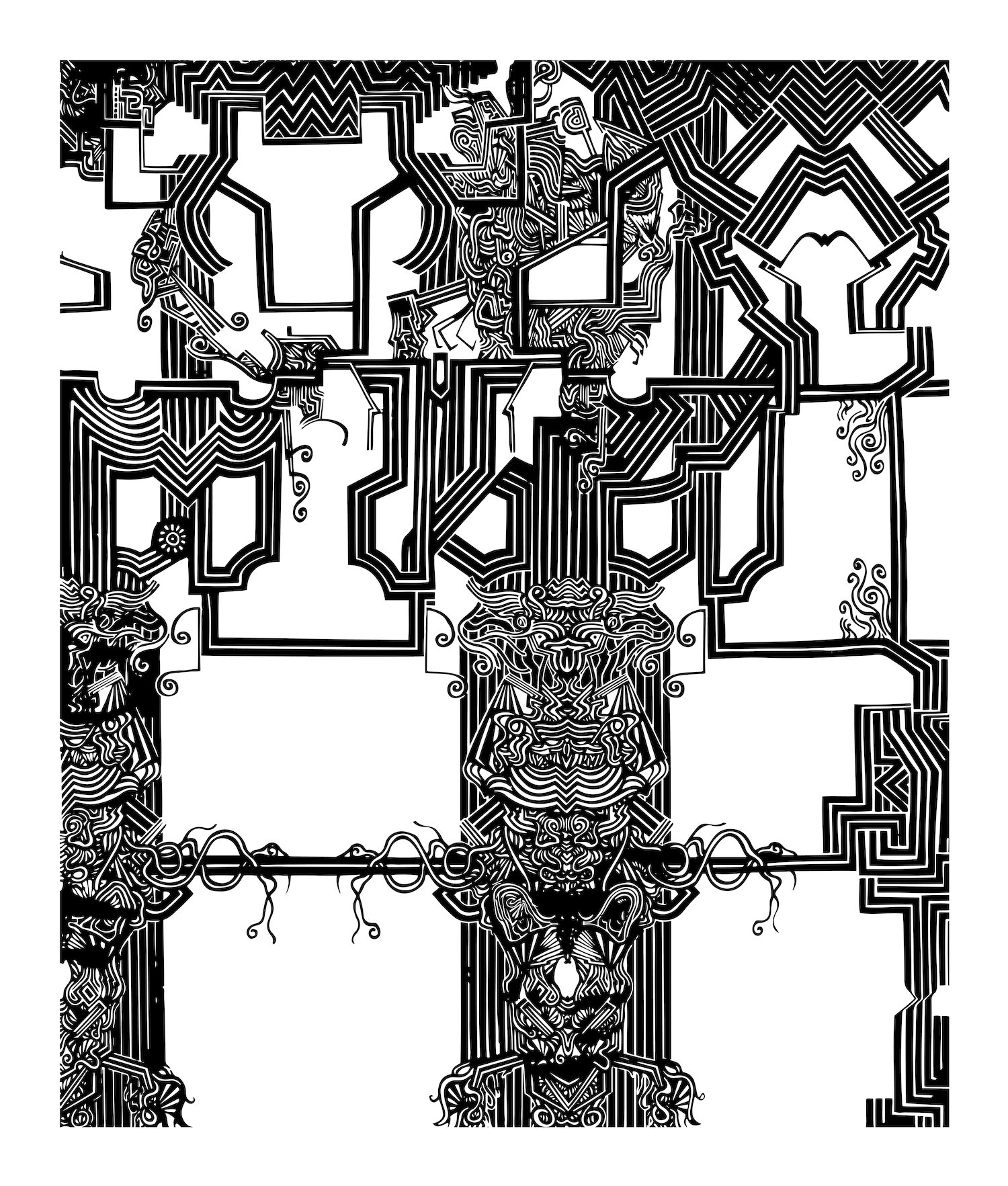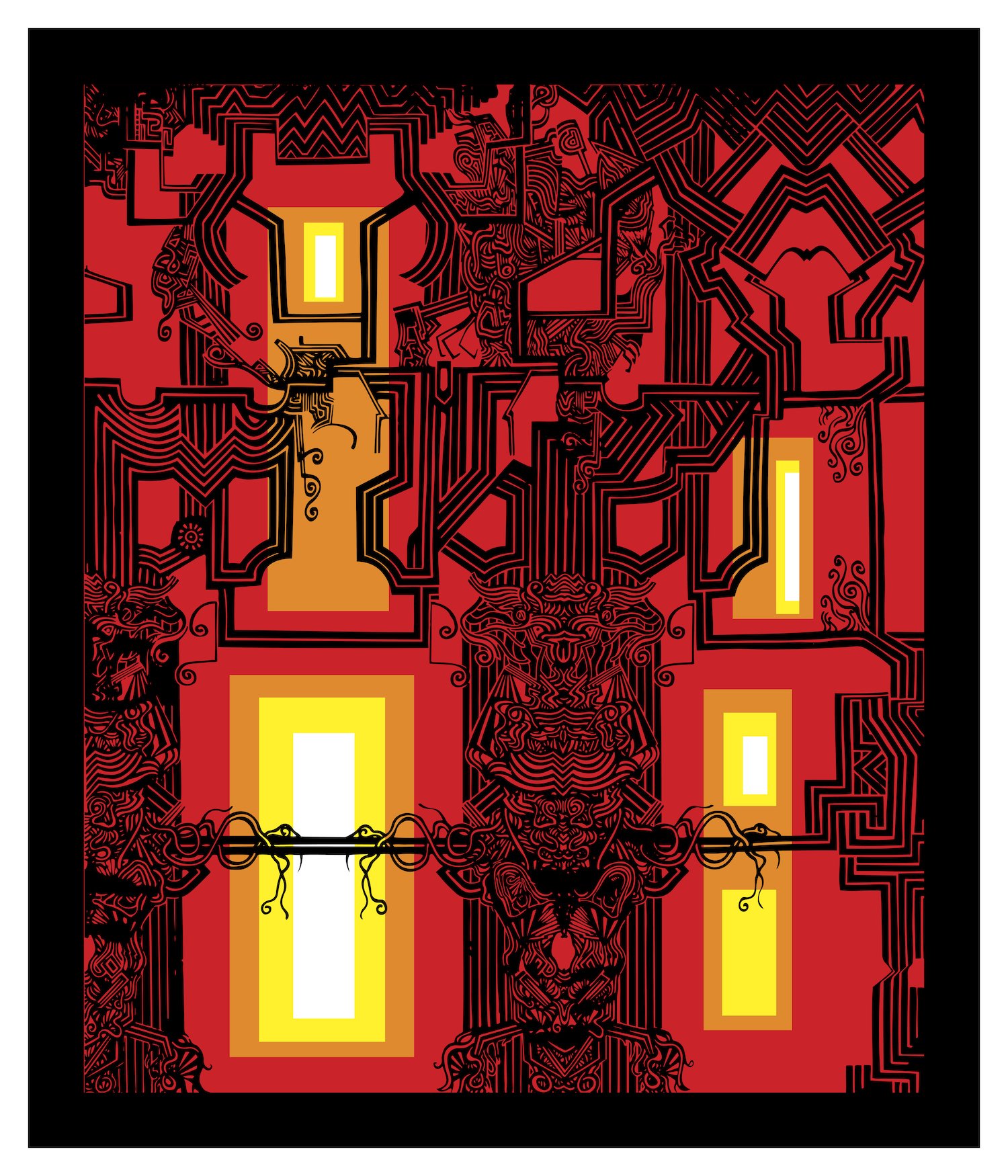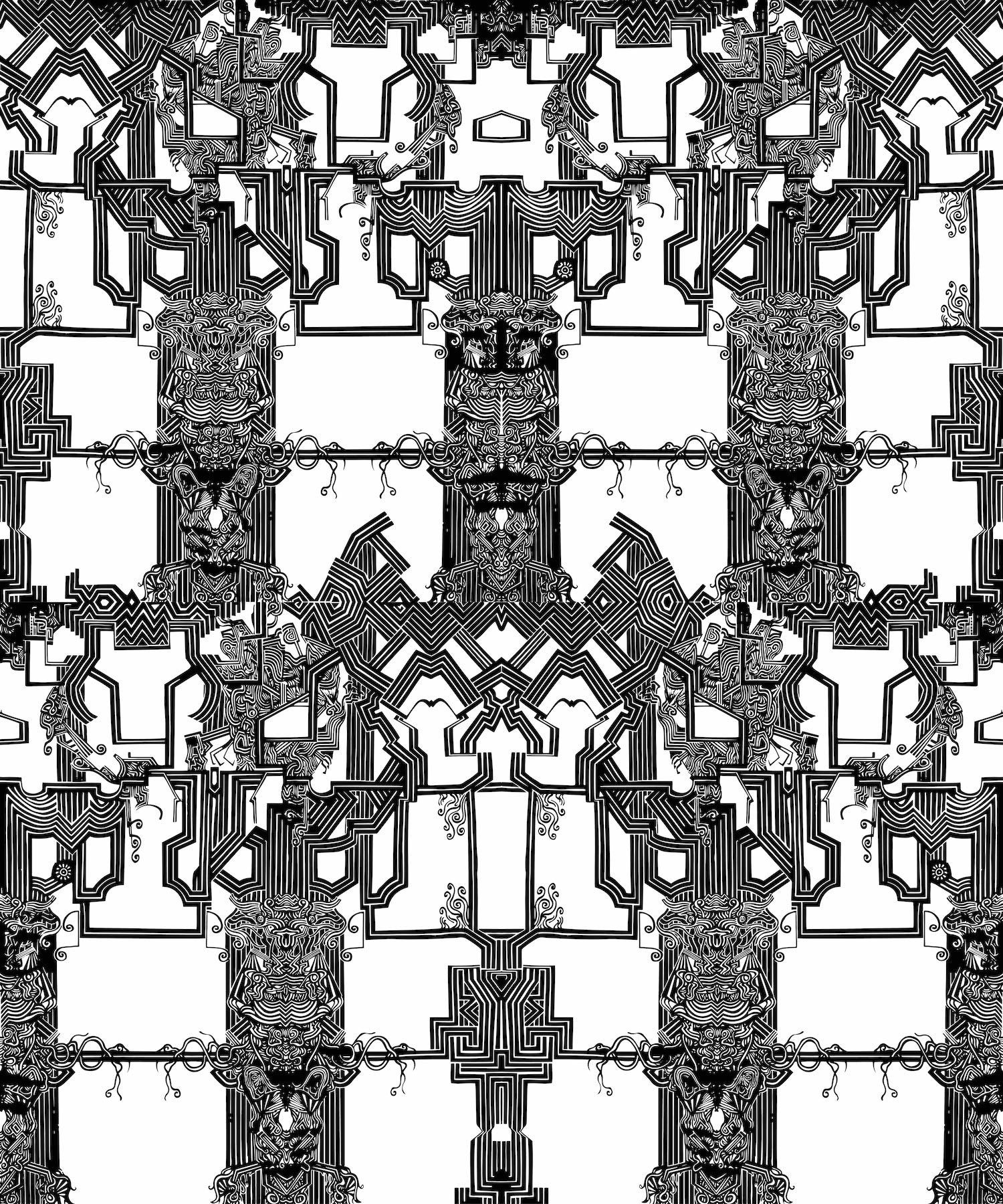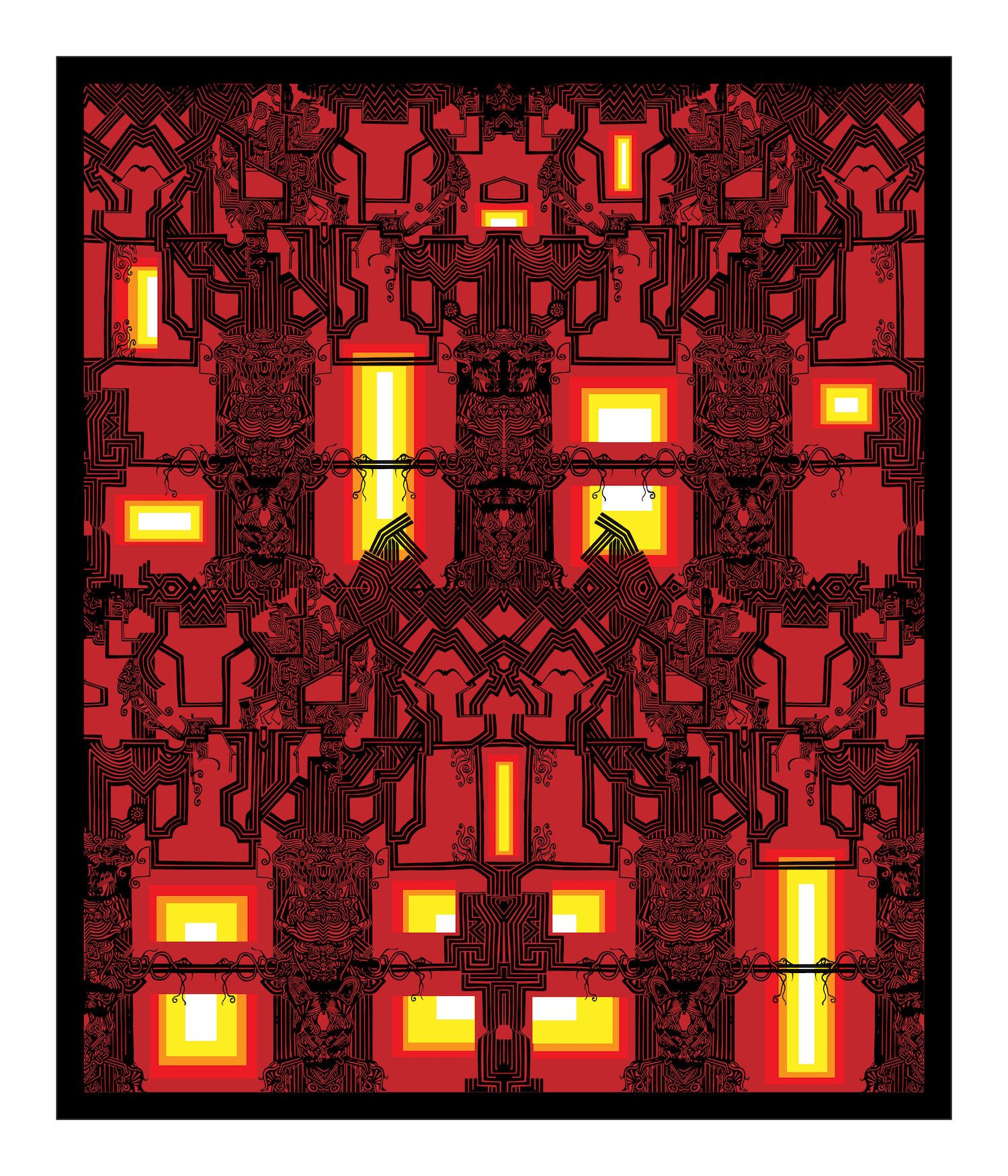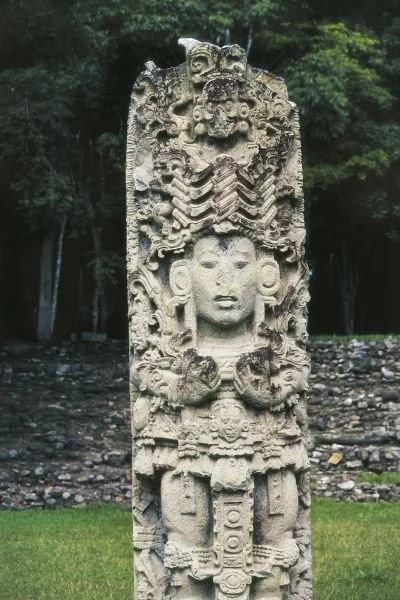Altair Series
Provenance and Sources
The original drawing for this sequence was created in the spring of 1969, done with felt marker on newsprint and tracing paper. From this image a rubylith stencil was hand cut over a period of two months, completed on the night of the Apollo 11 landing on the moon, July 24, 1969. From this, one edition of silk screen prints on red paper was pulled, of which only one survives. In 2015 this was scanned and transformed to a vector image in Adobe Illustrator, from which the designs for the current giclee prints were derived. The artist had thought of the original design, Cave Gods of Altair, as being part of an extended space, Labyrinth of Altair, which the artist was able to achieve using Adobe Illustrator.
This series derives from three sources of influence for the artist:
The Hindu Pillared Temple Hall (dated to c. 1560) in the Philadelphia Museum of Art, below. The artist may have first seen this as early as 1960 and visited it over many years.
Mayan art and Architecture – In 1962 the artist’s brother visited ancient Mayan ruins in the region of the Usumacinta River in southern Mexico. Images which he brought back made a strong impression on the artist. The stele shown below right is from Placeres, Campeche, Mexico.
Altair IV was the fourth planet of the Altair star system in the great classic science fiction movie of 1956, Forbidden Planet. The artist saw this movie c. 1957 at age 7 and had recurring nightmares associated with it through adolescence. The plot features an extinct advanced civilization, the Krell, which built a vast self-sustaining underworld machine of enormous power that could focus mental processes into physical form, inadvertently creating monsters. The artist imagined a religion of the Krell as an underground labyrinth of columns depicting both organic and inorganic gods

